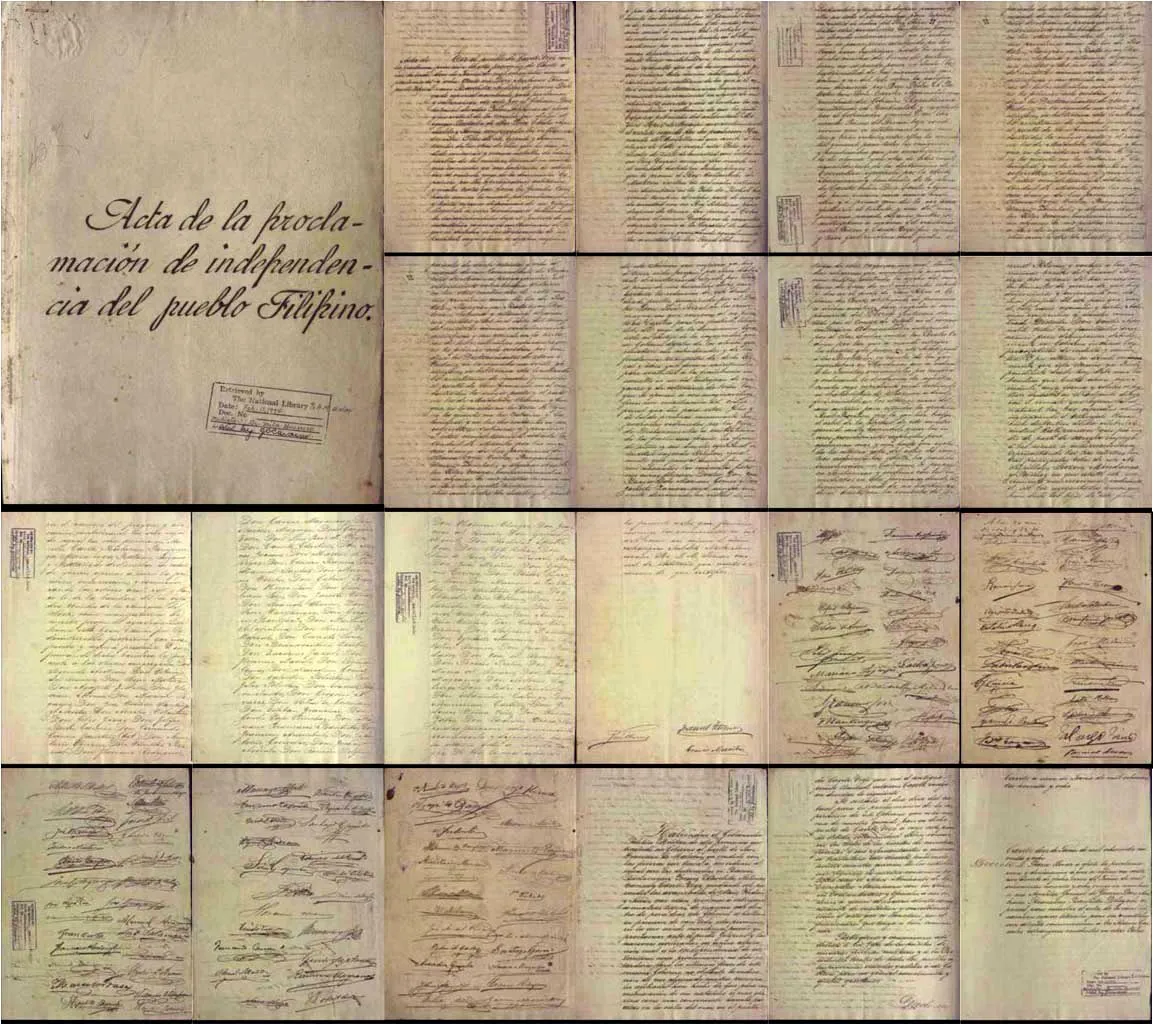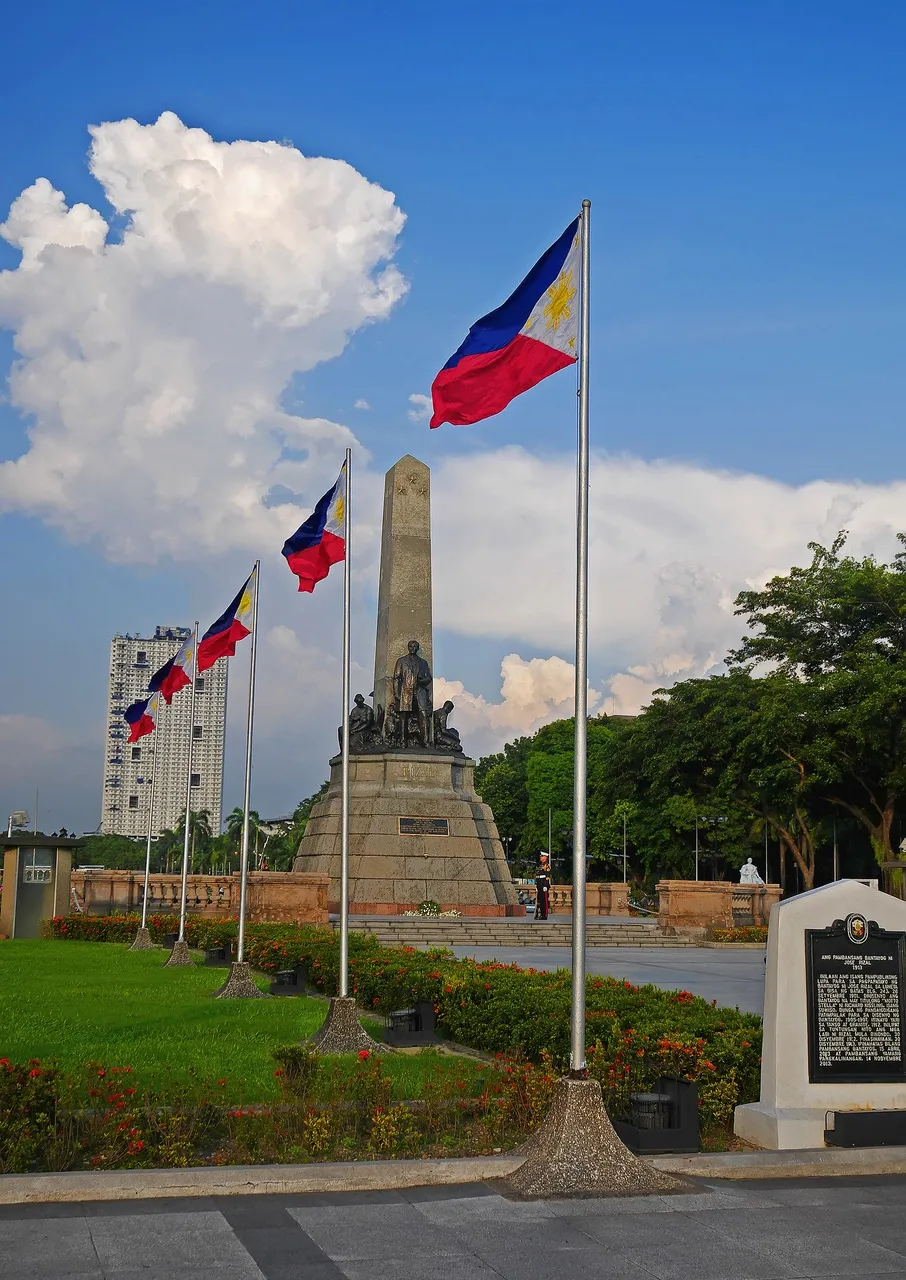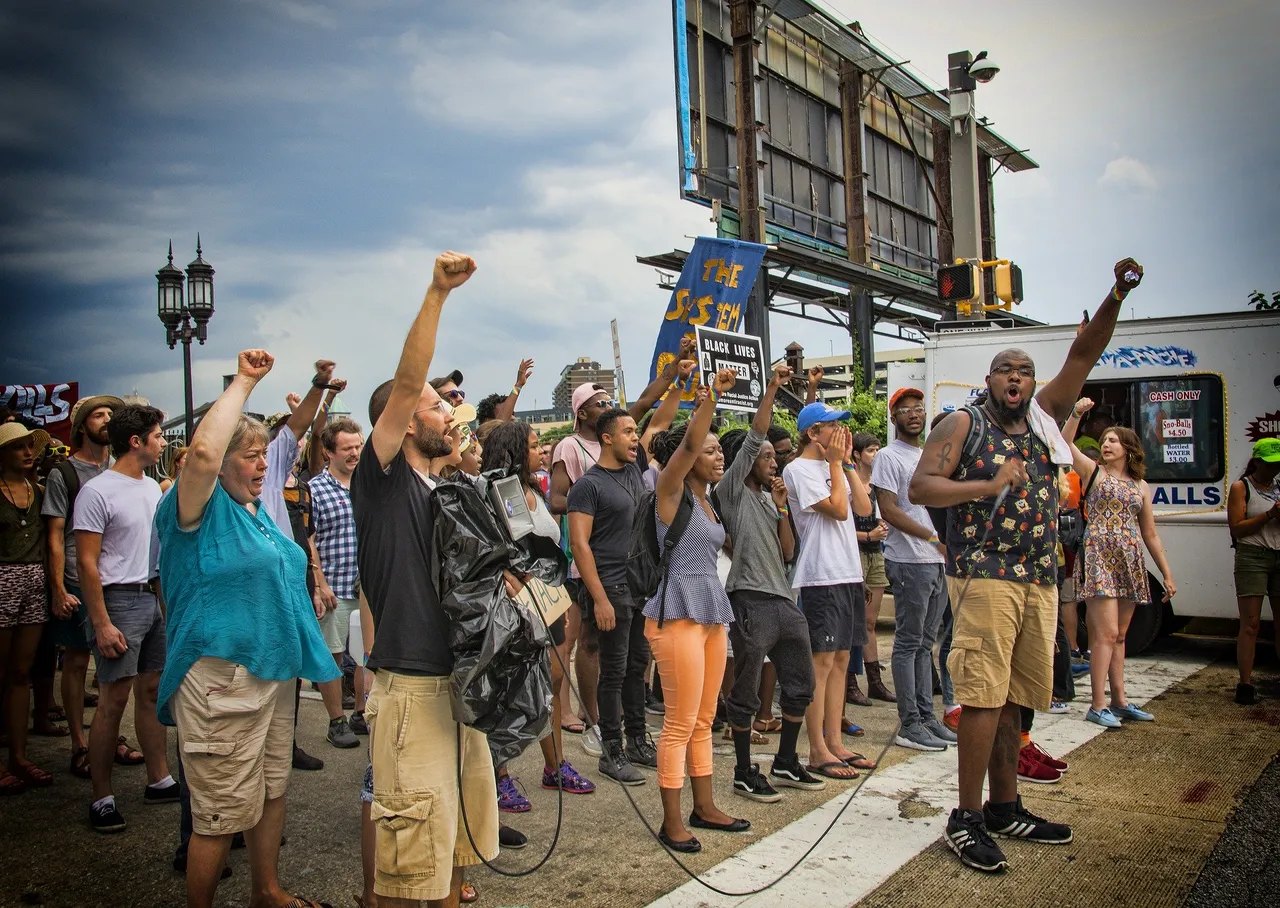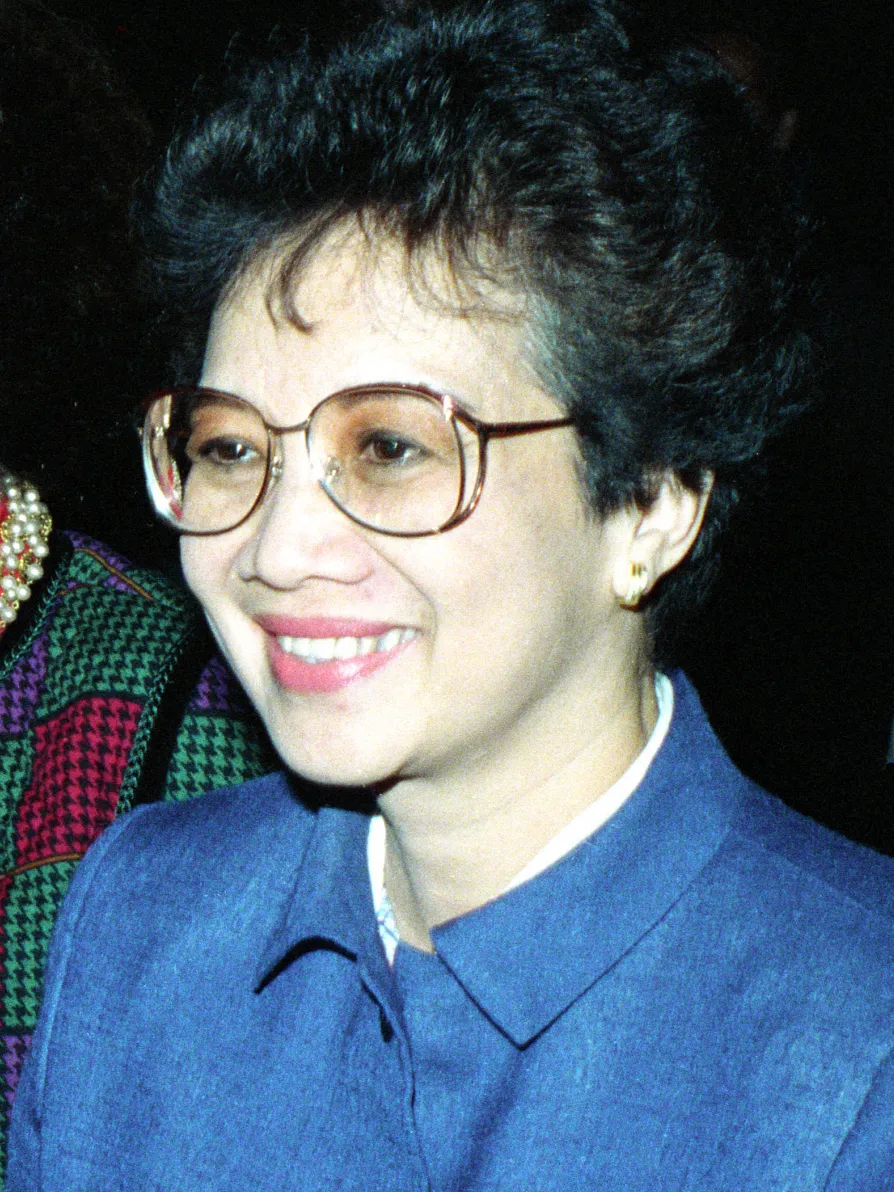BREAKING FREE
Today, we celebrate 122 years of independence from colonial Spain. It is the 122nd anniversary of the public reading of the Acta de la proclamaćion de independencia del pueblo Filipino or the Proclamation Act of Independence of the Filipino People in the town of Cavite-Viejo (now Kawit, Cavite) on June 12, 1898.

Image from here
333
This marked the end of the Spanish Philippines, which began in 1565 and ended in 1898 – a total of 333 years!
It was during the reign of Philip II of Spain that they were able to annex the country, hence, the interminable connection to his name.
FLAG
It was also the first time that the Philippine flag designed by Emilio Aguinaldo was unfurled. It took five days for Marcela Agoncillio to sew the flag. Her daughter Lorenza and Delfina Herbosa de Natividad (Jose Rizal’s niece) helped her complete the project in Hong Kong.

ANTHEM
The San Francisco de Malabon marching band played the Marcha Filipina Magdalo that day. Composed by Julian Felipe, it is now known as Lupang Hinirang: the Philippine national anthem.
TREATY OF PARIS
Spain (and the United States) did not recognize the Acta de la proclamaćion de independencia del pueblo Filipino. The Treaty of Paris ended the Spanish-American War with Spain selling the Philippines to the United States for $20 million.
TREATY OF MANILA
It wasn’t until July 4, 1946, after the end of WWII, that the United States granted independence to the Philippines via the Treaty of Manila.
RA 2166
President Diosdado Macapagal’s Republic Act No. 2166 officially designated June 12 as the country’s Independence Day.
I hope this list captures the most notable events which explain why we celebrate this day and congratulate each other for breaking away from the shackles of colonialism.
But my story doesn't end here.
THROUGH THE LENS
Looking at current events happening around the world, I feel a sense of foreboding that cataclysmic changes will happen, not only because of the death of George Floyd and the subsequent upsurge of the social movement Black Lives Matter, but because this is also happening at the same time as the Coronavirus pandemic. For me, the extreme situation will force us, as a human race, to adapt to what is happening in the world in all facets of our life and gain a greater awareness of ourselves, society, the institutions and values, the importance of family and health, finances and politics.

UNDERSTANDING THROUGH ASSOCIATION
Watching footage of the protesters crossing the Manhattan Bridge and other large and peaceful gatherings, I was fascinated by the diversity and just the number of people participating. The sight of it made me recall the big protest rallies that happened in the country starting in 1983, when opposition leader and former senator Ninoy Aquino Jr. was assassinated and the swelling mass movement growing in the country because of the abuses of the dictatorship began to swell and gain massive support.
It also mirrors the events during the Spanish Philippines with the execution of GOMBURZA in Bagumbayan in 1872 and Dr. Jose Rizal, our national hero, in 1896.
MARTIAL LAW BABY
I am called a martial law baby. This means that I was born after the declaration of martial law in the Philippines in 1972. It also means that I knew only of one president from the time I can remember up to the time that People Power happened in 1986, the then dictator President Ferdinand Marcos.
A BLOODLESS REVOLUTION
Looking back at the events leading to it, there was a killing involved that triggered the beginning of the end for Mr. Marcos. Three years before, former senator Benigno Aquino Jr. was assassinated while alighting a plane from the United States where he was living in exile for a few years following his 1980 heart surgery in the America.
He decided to return home to help lead the opposition in restoring democracy in the country, and President Marcos knew that Ninoy was a worthy adversary. It isn't clear, up to this day, who the mastermind was behind the assassination, but one thing is certain: it started an avalanche of support for leaders of the opposition both in and those outside of prison.
Ninoy's death emboldened the people. It gave the people the courage to stand up and let their voices be heard. It galvanized the social movement that had been brewing for many years.
But this won’t be an easy transition of power. The political structures and institutions that governed the land are still in place and it won’t be transformed as easily.
Much like the issue of inequality and racism in America, the Philippines had plenty of problems; poverty, inequality and social justice was nowhere to be found, and state run media reports dominate the airwaves.
The socio-political pressure was at a boiling point. The United States growing concern forced Mr. Marcos to call snap elections to show he is still beloved by the people. He was proven wrong and plain housewife Cory Aquino became the first woman president of our country after a series of events; two separate proclamations, the Catholic Church’s condemnation of the elections and subsequent appeal of Cardinal Sin to support the military revolt against President Marcos.
The then Minister of Defense and the Vice Chief of Staff joined forces to stage a coup de d'état. Cardinal Sin, having heard of what happened, called on the people to protect the opposition soldiers and the rest, as they say, is history.
Cory Aquino became the first woman and 11th president of the Philippines. She was named Time Magazine's woman of the year in 1986 and was one of the ‘20 Most Influential Asians of the 20th Century’ in 1999.

By Airman Gerald B. Johnson, Public Domain, Wikimedia
REFLECTIONS ON MY COUNTRY'S RECENT HISTORY
It's almost 1 a.m. and I'm still awake. Somehow, the social unrest in America reminded me of the 1986 People Power Revolution, which toppled the late dictator Ferdinand Marcos from power and was hailed as the first of its kind in the world - a bloodless revolution.
And as we have learned from history, an unresolved socio-political problem needs a trigger to unleash massive outpouring of solidarity and support. In our case, it was the late senator's assassination and snap elections; in the U.S., George Floyd's death and the Black Lives Matter movement.
As I tried to understand what was happening in the U.S., I had to look at my own country's history to see events and people that similarly happened and influenced the outcome of national issues. In our case, the election happened before, while it is still to take place in America.
It's sad that people have to sacrifice their lives to propel change, but this is why heroes become who they are: catalysts of change with the ability redefine and shape the world.
Today is also Philippine Independence Day. A reminder that the rights and freedoms we enjoy today wasn’t given to us for free: it was paid for with the blood of heroes and the death of martyrs, much like the deaths of George Floyd and Ninoy Aquino Jr. And as we remember and honor these people, we also need to look at our future, to shape and redefine it so that people will continue to experience the freedoms we have and remember that there’s no such thing as a free lunch.
That's it for now. Thank you for reading my attempt at interpreting current events. I sincerely hope that I have honored history, the people and events that I mentioned here.
That said, I appreciate you dropping by and wish you a happy and healthy 2020. Keep safe everyone! :)
